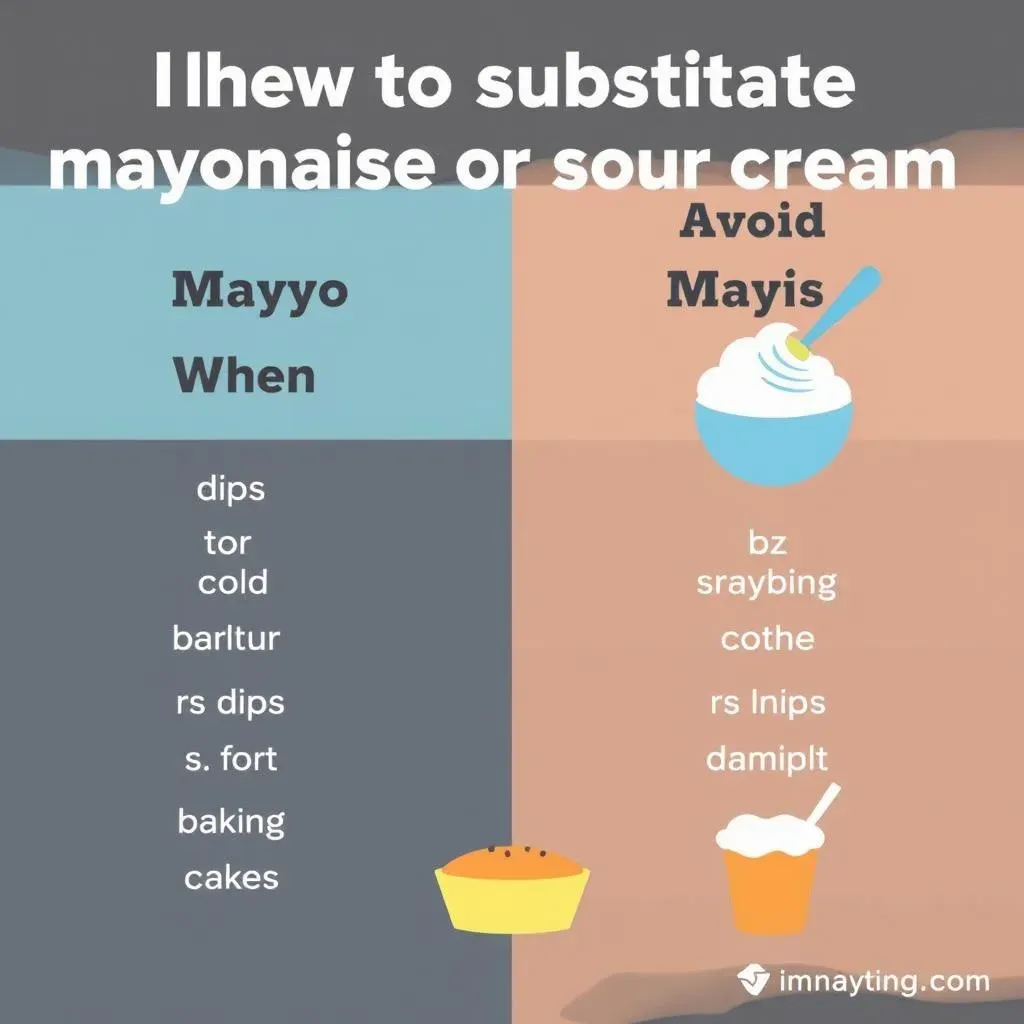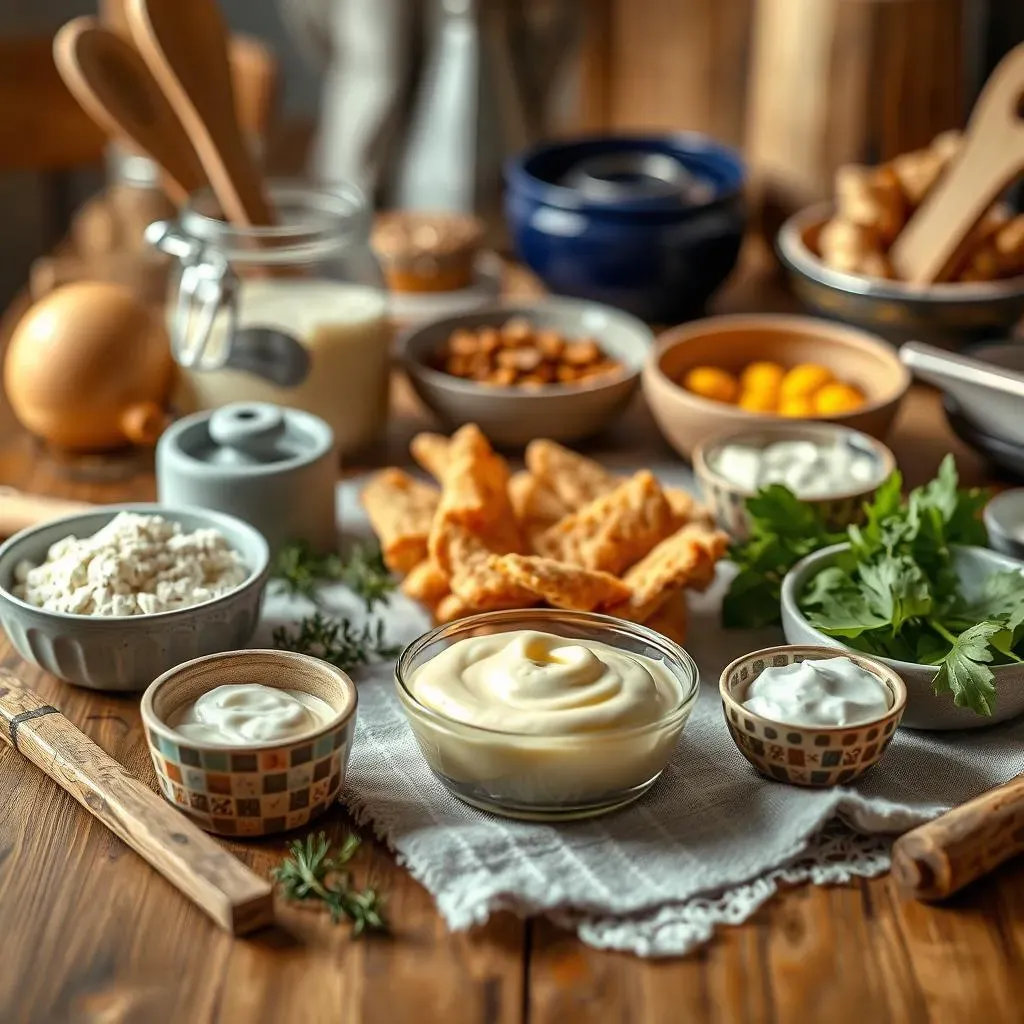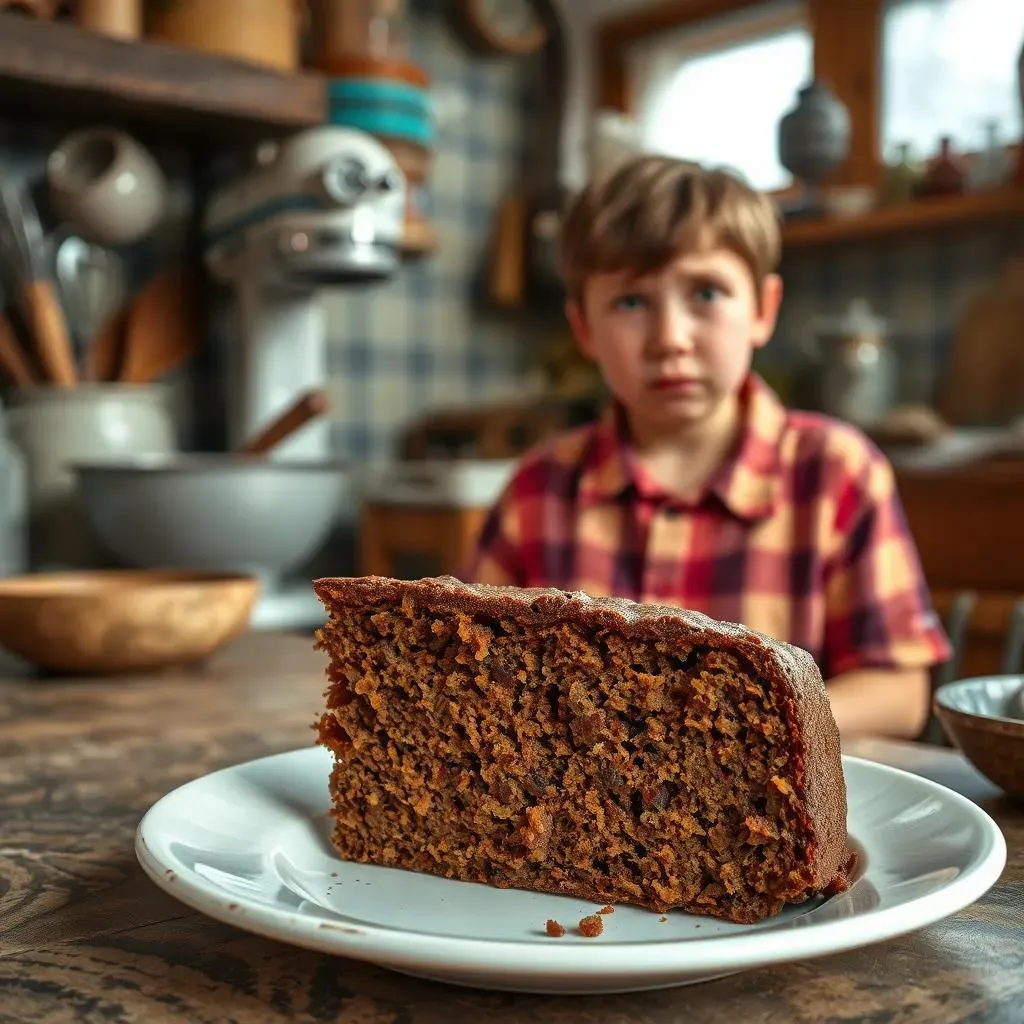Table of Contents
Ever found yourself in the middle of cooking, only to realize you're out of sour cream? It's a kitchen pickle we've all faced. You might glance at the fridge and see that jar of mayo staring back. So, the question pops up: can you actually substitute mayo for sour cream? The short answer is, sometimes! It’s not a perfect swap, and there are things to consider, like flavor and fat content. This article will guide you through the ins and outs of using mayonnaise as a stand-in for sour cream. We'll look at when it works best, how the taste and texture changes, and which recipes are most forgiving. From creamy dips to tangy sauces, I'll show you how to navigate this substitution and tackle any potential problems that might arise. Let's get cooking, or rather, substituting!
When to Substitute Mayo for Sour Cream

When to Substitute Mayo for Sour Cream
Okay, so you're staring at that recipe calling for sour cream, and all you've got is mayonnaise. Don't panic! There are times when this swap can work like a charm. Think about it: both are creamy, tangy, and add richness. The key is knowing when that richness is a plus and when it might throw things off. For instance, if you’re making a cold dip, like a spinach artichoke dip, or a creamy salad dressing, mayo can often stand in without anyone batting an eye. It's all about the context. The tanginess of mayo is similar enough to sour cream that it can often go unnoticed, especially when other flavors are in play.
However, baking is where you need to tread carefully. Mayo has a higher fat content than sour cream, which can alter the texture and rise of baked goods. It might make your cake a bit denser, or your muffins a little too moist. But for things like a quick creamy pasta sauce, or even a potato salad, mayo can actually bring a delicious boost. It's about understanding the role sour cream plays in the recipe. Is it for tang? Is it for moisture? Or both? Knowing that will help you decide if mayo is a good substitute. It's not a one-size-fits-all answer; it's more of a kitchen adventure.
Use Mayo When: | Avoid Mayo When: |
|---|---|
Making cold dips and dressings. | Baking cakes or delicate pastries. |
Creamy pasta sauces. | Recipes where sour cream provides a specific lift. |
Potato salads and egg salads. | Recipes that rely on sour cream's lower fat content. |
Taste and Texture Differences: Mayo vs. Sour Cream

Taste and Texture Differences: Mayo vs. Sour Cream
The Tang Factor
Okay, let's talk taste. Sour cream has this lovely, bright tang. It's that slight sourness that makes it so good in things like tacos and baked potatoes. Mayonnaise, on the other hand, has a different kind of tang. It's more of a vinegary flavor, thanks to the lemon juice or vinegar in it. While both are tangy, the source of that tang is distinct. This difference can be subtle in some recipes, but it can be noticeable if you are using a lot of either.
Think about it like this: sour cream is like a crisp, tart apple, while mayo is more like a slightly pickled cucumber. Both are great, but they have their own unique profiles. So, when you’re thinking about using mayo as a substitute, consider whether that vinegary note will complement the other flavors in your dish. Sometimes, that extra tang is exactly what your recipe needs, but other times, it might not be the best fit.
The Creaminess Quotient
Now, let’s get into the texture. Sour cream is thick and, well, creamy but it's not as dense as mayo. It has a lighter feel, and it tends to blend in seamlessly. Mayonnaise, in contrast, is much denser and richer. This is because it has a significantly higher fat content. This higher fat content gives it a super smooth, almost oily texture. When you use it as a sour cream substitute, it'll definitely make your dish richer.
This difference is super important, especially in baking, where the fat content can really affect the final product. In cold dishes, the extra richness from mayo can be a bonus, making your dip extra decadent. But in something like a cake, it could throw off the balance. It's like using butter instead of oil in a recipe – it can work but it will change the final texture. So, keep an eye on that fat content when you’re deciding between mayo and sour cream.
Characteristic | Sour Cream | Mayonnaise |
|---|---|---|
Tang | Bright, lactic tang | Vinegary tang |
Texture | Thick, creamy, lighter | Dense, rich, oily |
Fat Content | Moderate | High |
How to Substitute Mayo for Sour Cream in Recipes

How to Substitute Mayo for Sour Cream in Recipes
Alright, so you're ready to get your hands dirty and actually make the swap. First things first, don't just dump a spoonful of mayo in and hope for the best. The key is to start small and adjust as you go. If the recipe calls for one cup of sour cream, start with about 3/4 cup of mayo and see how the consistency looks. You can always add more, but you can't take it away. If the recipe is for something cold, like a dip or salad dressing, you might find that you don't need to adjust at all. The extra richness of mayo can be a plus. However, in sauces, you might want to add a splash of lemon juice or vinegar to mimic that sour cream tang.
For baking, things get a bit trickier. Because mayo has more fat, it can make your baked goods denser. If you're feeling adventurous, try using half mayo and half plain yogurt to lighten things up. This will help get you closer to the texture you want. Also, keep an eye on the moisture level. You might need to reduce the liquid in your recipe a bit to compensate for the extra moisture from the mayo. It's all about experimenting and seeing what works best for your particular recipe. Don't be afraid to taste as you go and adjust. Cooking is all about improvisation, right?
Recipe Type | Mayo Substitution | Adjustment Tips |
|---|---|---|
Cold Dips/Dressings | Start with equal parts | Add a bit of lemon juice or vinegar for tang. |
Sauces | Start with 3/4 amount | Add lemon juice or vinegar for tang. |
Baking | Half mayo, half yogurt | Reduce liquid in recipe slightly. |
Potential Problems When Using Mayo as a Sour Cream Substitute

Potential Problems When Using Mayo as a Sour Cream Substitute
The Fat Factor Fiasco
Alright, let's get real. Using mayo instead of sour cream isn't always sunshine and rainbows. One biggie is the fat content. Mayo is a fat bomb compared to sour cream. This can mess with recipes, especially when baking. Instead of a light and fluffy cake, you might end up with something dense and heavy. And if you are not careful with your measurements, the extra fat can make your dish oily or greasy. Nobody wants that. It's like using too much butter in a recipe, you'll get all the fat and not enough of the good stuff.
Also, consider how the fat interacts with other ingredients. In some cases, the extra fat from mayo can cause sauces to break or separate. This happens because mayo is an emulsion, which means it's a mixture of oil and water. When you heat it up, or mix it with other acidic ingredients, it can sometimes fall apart. So, while mayo is a great shortcut, it's not always a flawless one. It's important to know the potential pitfalls before you go all-in on that substitution.
The Tang Tango
Another potential problem comes down to the tang. Yes, both mayo and sour cream are tangy, but they are different kinds of tangy. Sour cream has a lactic tang, while mayo has a vinegary tang. This difference can be subtle, but it can also make or break a recipe. If you’re trying to make a recipe that's supposed to have that bright, refreshing sour cream flavor, mayo might not cut it. The vinegary tang can overpower some dishes, especially delicate ones.
Think of it like this: you wouldn't use lemon juice when you need lime, even if they are both citrus. They have their own unique flavors, and that's what makes them special. The same goes for mayo and sour cream. So, before you swap them out, think about the flavor profile you're aiming for. Sometimes a little extra lemon or vinegar can bridge the gap, but it's not always a perfect fix. It's about knowing your ingredients and how they play together.
Problem | Consequence | Solution |
|---|---|---|
High Fat Content | Dense baked goods, oily dishes | Use less mayo, mix with yogurt |
Different Tang | Altered flavor profile | Add lemon juice or vinegar |
Emulsion Breakage | Sauces separate | Use low heat, mix gently |